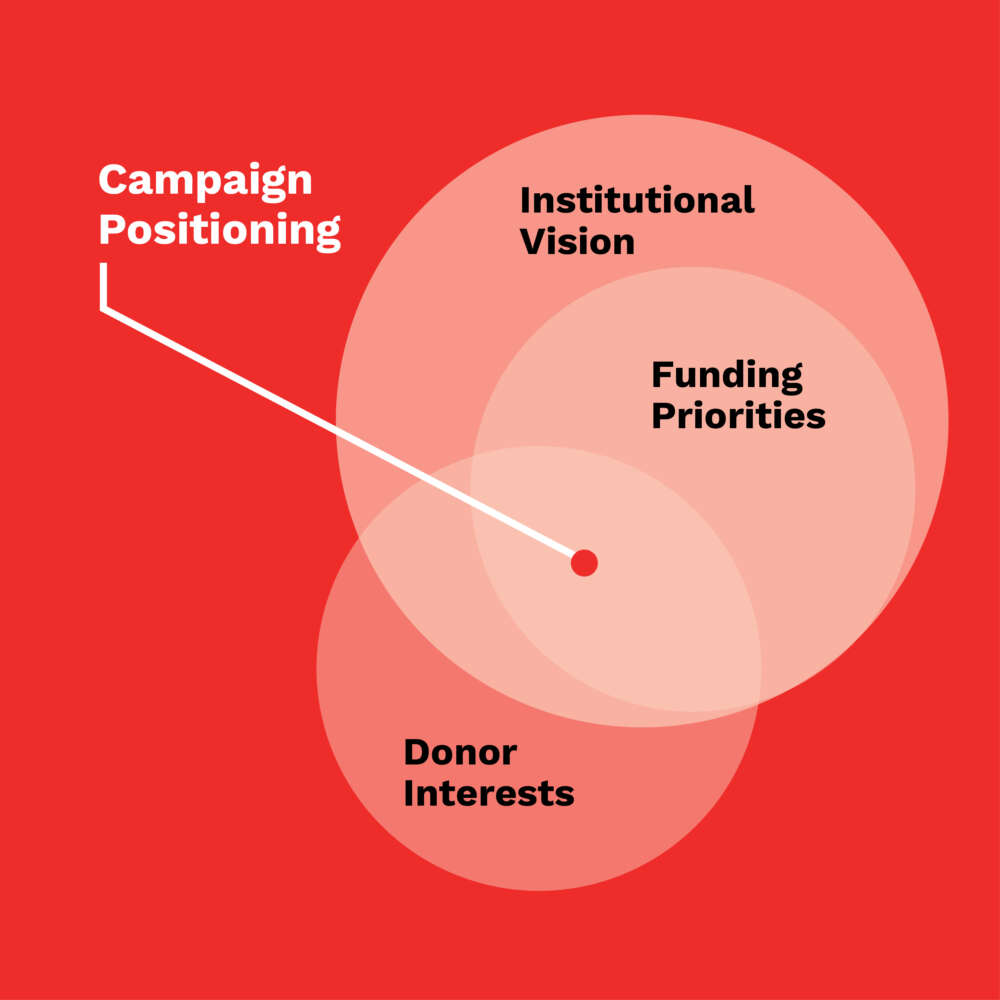Lipman Hearne: How do you translate institutional vision to a philanthropic imperative? EVP and philanthropy practice lead Sara Stern teamed up with The Phoenix Philanthropy Group for a webinar, “Visioning, Priority Setting, and Goal Setting: Building the Foundation for a Successful Campaign,” offering practical tips to engaging campus leaders recasting their campaign priorities. Sara focused on translating those funding priorities into philanthropic imperatives. A recording of the entire webinar is here. We sat down with Sara and Colleen O’Grady, Lipman Hearne’s senior philanthropic strategist, to dig deeper into this important topic.
Sara: I think that giving—especially campaign-level giving—is fundamentally an act of optimism. There’s lots of research documenting the ways giving is beneficial to individual health and well-being, but I think investing through a campaign goes even further. Donors who commit to a campaign are committing to a future state of their chosen institutions, which is, by definition, optimistic! Our job as marketers and communicators is to help paint the picture of a future state that will inspire donors.
Colleen: And we have to ask ourselves: what is it audiences want to understand about that future state? Often, they don’t need to see the future rendered in high-definition, specific 3D glory but instead they want to know the way it will feel. Or they want to understand the values and principles that are embodied in that future.
Sara: The campaign brand and messages we created for Bowdoin College were an example of that. They sent the message to donors that in Bowdoin’s future, and in the future of students who will choose Bowdoin, there is no upper limit to how much good we think people can do.
Colleen: Those messages were rooted in wonderful scenario planning and vision articulation on the part of Bowdoin’s president, who was very clear in making a firm promise to Bowdoin students.
Lipman Hearne: But what about institutions where the goals of a campaign are still changing?
Colleen: Maintaining the flexibility to continue adapting and changing is in itself a valid goal, and a stated goal of many nonprofits—and of their donors, I should add. That doesn’t mean donors are looking for campaign messages in the neighborhood of “anything goes.”
Sara: The campaign should still be focused on a concrete overarching vision.
Colleen: Donors need to understand the values with which they are being invited to associate themselves, and the way the world will be different when the campaign succeeds. If that end is crystal clear, donors see the value in keeping varied routes open between point A and point B.
Sara: And sometimes point B turns into point B+ midway through the campaign.
Colleen: That’s a good way to put it. It isn’t a new destination, but an improvement on that destination. Our goal is always to supply messaging tools that empower these kinds of pivots, and can bring your donors along the campaign journey.
Sara: Our approach always centers on donors—it’s not exclusively what you, the institution wants to achieve—rather, it’s what you and your donors can achieve together.
More thought leadership from Lipman Hearne
7 Steps to Secure Buy-In and Roll Out Your New Brand
.How do you build consensus and launch a brand into the world? Lipman Hearne’s Alexia Koelling and Libby Morse hosted …
: